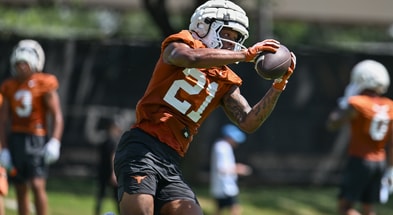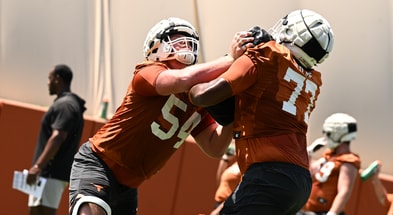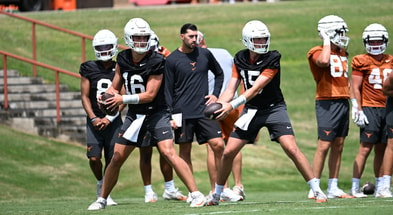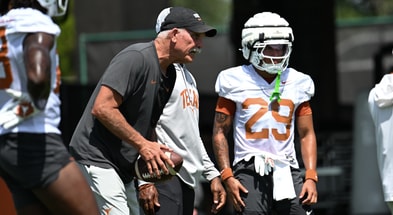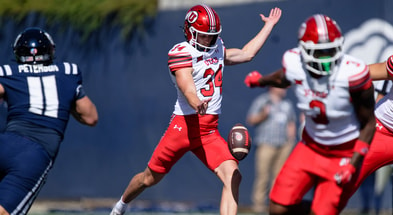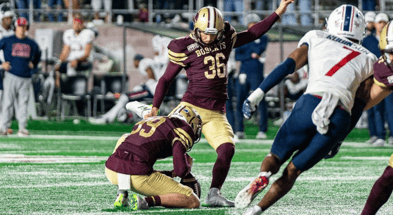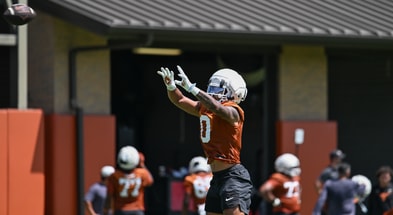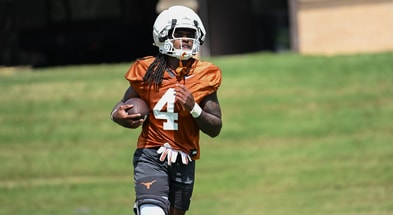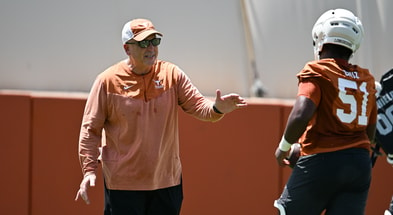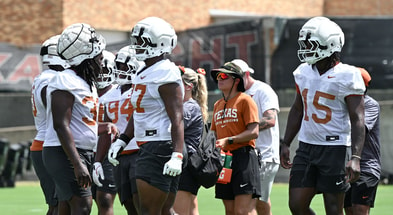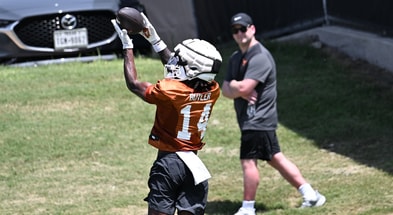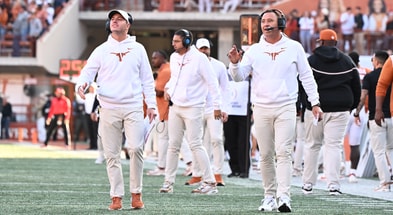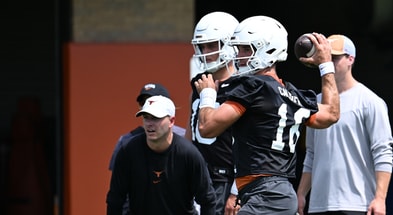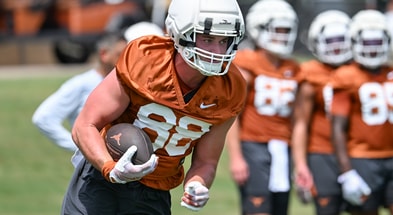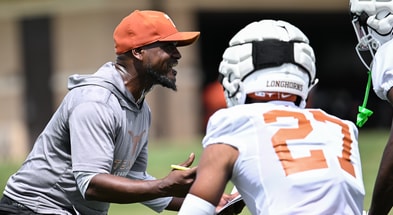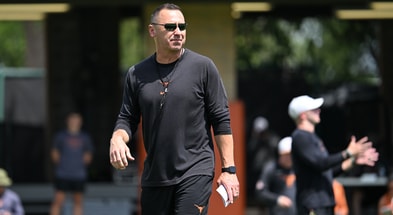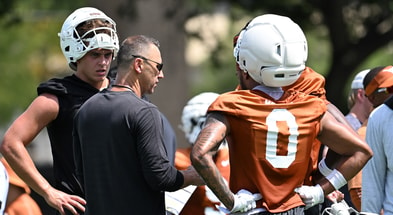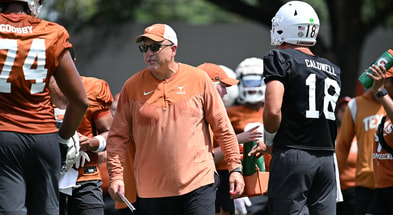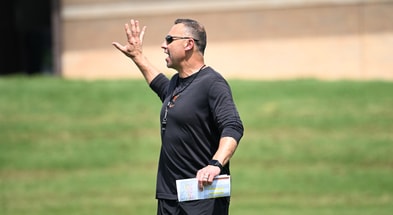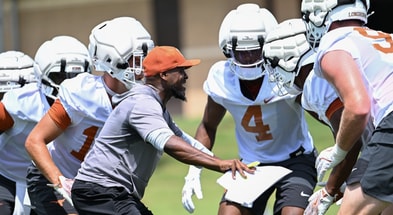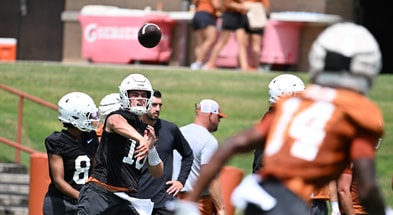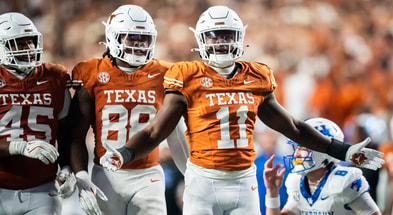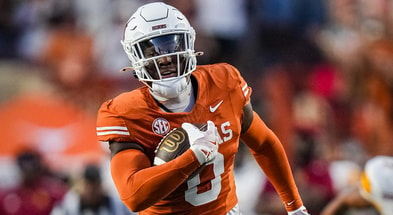'SEC Storied: Wishbone' to tell the history of the wishbone and its role in Texas' rise to national prominence
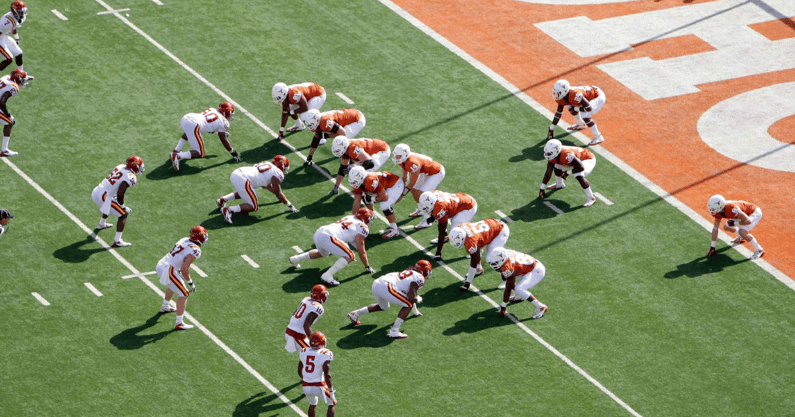
The direction of college football changed drastically in the late 1960s, all thanks to an offensive formation that looked like a “pulley bone.”
[Sign up for Inside Texas for $1 and get PLUS access up to the Ohio State game!]
The wishbone offense, created by former Texas head coach Darrell Royal and offensive coordinator Emory Bellard, not only catapulted Texas to two national titles, multiple Southwest Conference titles, and national prominence in the late 1960s and early 1970s. It also became the defining feature for two other giants in the same era: Oklahoma and Alabama. On Thursday, the full story of the wishbone will be told in a documentary on SEC Network airing at 6 p.m. Central.
SEC Storied: Wishbone will tell the tale of the innovative system.
Directed by Chip Rives, who also directed 30 for 30s Brian and the Boz and Phi Slamma Jamma out of Texas Crew Productions, the documentary will dive into the genesis of the offense and how it changed the fortunes of coaches considered the best the sport has seen at a time they needed it most.
The wishbone made its debut early in the 1968 season, one where Texas started 0-1-1. This was not a good thing for Royal as his years following the 1964 campaign were not up to the standard he had helped create. Texas had four losses in each of the 1965, 1966, and 1967 seasons, and pressure to perform was on DKR.
“What I learned was there was a period of time where Darrell Royal was not revered like we remember him,” Rives told Inside Texas. “He was on the hot seat in the late ‘60s. Candidly, he probably got phased out because of the wishbone because he gave the keys to the kingdom to his biggest rival. That’s the biggest takeaway as it relates to Texas that I learned. Darrell Royal was fallible. He was not this demigod for his entire existence. He had issues just like the rest of us.”
But those issues didn’t pop up until the mid-1970s. When Texas deployed the wishbone, it started a run of 30 straight wins and two national titles.
It took tinkering, like all great inventions. Texas thought its superstar quarterback Bill Bradley would be the one starting things on a down to down basis in the offense in 1968. Bradley, however, struggled to get the timing down. Royal and Bellard had to go to plan B.
“Supposed to be the greatest quarterback Texas had up to that point in time,” Rives said about Bradley. “When they tried to run this offense, he just couldn’t do it. They had to go with this other guy from (Longview) that was an afterthought named James Street, and the rest is history.”
The wishbone propelled Texas into prominence and made Royal into the type of coach a school names a stadium after. Texas won the 1969 and 1970 national championships and won the Game of the Century in 1969 thanks to Street’s efforts versus No. 2 Arkansas.
But it also turned two different programs into machines.
Royal, believing coaches owed it to the fraternity to help one another no matter what team they were on, had Bellard help Barry Switzer install the wishbone in Norman. Switzer has somewhat downplayed OU’s reliance on Bellard, but there’s no question the Longhorns helped the Sooners understand the offense that helped Oklahoma claim national titles in 1974, 1975, and 1985.
And that instruction would later help another crimson team in Alabama. Bear Bryant won the 1965 national championship with the Crimson Tide and followed it up in 1966 with a perfect 11-0 season. But in 1967, 1968, 1969, and 1970, not only did Bryant fail to win double-digit games, he managed to go just 2-2 against Auburn and didn’t contend for the Southeastern Conference championship.
Alabama played Oklahoma to a 24-24 tie in the 1970 Bluebonnet Bowl in Houston. That was Bryant’s first chance to see the wishbone in person. Once the Bear laid his eyes upon the system, he realized that’s what he needed to survive into the 1970s at Alabama.
Top 10
- 1New
SEC Football
Predicting 1st loss for each team
- 2
ESPN acquires RedZone
$1 Billion agreement
- 3Hot
College Football Playoff
Ranking Top 32 teams for 2025
- 4Trending
Tim Brando
Ranks Top 15 CFB teams for 2025
- 5
Most improved teams
Top 12 for 2025
Get the Daily On3 Newsletter in your inbox every morning
By clicking "Subscribe to Newsletter", I agree to On3's Privacy Notice, Terms, and use of my personal information described therein.
“Similar to Darrell Royal, Bear Bryant was on the hot seat,” Rives said. “He needed a change. A bit of serendipity. Alabama is playing Oklahoma in the Bluebonnet Bowl in the Astrodome – God bless the Astrodome. They’re playing in the Bluebonnet Bowl in Houston, and they see this offense. Bear is like ‘holy sh–,’ that’s the future right there.”
The documentary explains the extraordinary measures Bryant put in place to surprise opponents with the system in 1971. After installing it, Alabama won the SEC eight times in the 1970s and claims the 1973, 1978, and 1979 national championships as a result of utilizing the wishbone.
The wishbone is not the common system it was in the 1970s and 1980s. Rives identified the 1985 season, one where Oklahoma won the national championship with Jamelle Holieway as the quarterback in place of the injured Troy Aikman, as the system’s last stand. At that moment, the rise of vertical offenses which focused on passing quarterbacks like Dan Marino, John Elway, and even Texas head coach Steve Sarkisian became the popular style.
“The wishbone, for all its glory, was really a finite period of time,” Rives said. “It was really 1968 until the early ‘80s. Obviously the military schools still run it out of necessity, but it’s too much. College kids can’t handle it.”
More than just Texas, Oklahoma, and Alabama ran the system. Bellard brought it with him to Texas A&M. Teams from around the nation continued to run it, and the system evolved too. Former Navy and Georgia Tech head coach Paul Johnson ran his own version he’d later call the “flex bone,” which positioned the two running backs as wing backs behind the offensive tackles.
But systems fade. Passing became more popular, and that’s before Hal Mumme and Mike Leach created another system that revolutionized how college football was played with the Air Raid.
Before they fade, though, they shine. And for an extended window of time considering the history of college football, the wishbone helped three teams burn bright.
The documentary airs Thursday, July 17 at 6 p.m. Central on SEC Network. It will also be on the ESPN app.
More information can be found here. More info on Rives and Texas Crew Productions can be found here.
